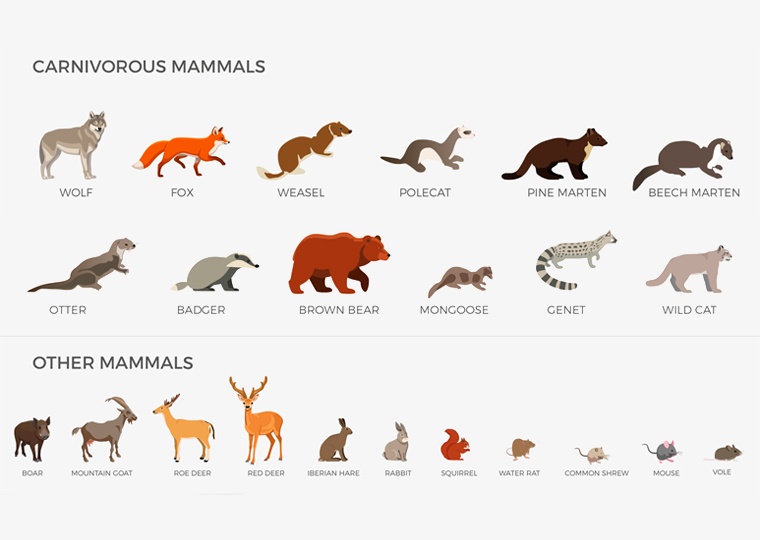-
Be surprised by images from the camera traps ACCIONA installed around its facilities, allowing us to get to know the behavior of wild animals in their natural habitats
-
When, in 1943, Wenceslao Fernández Flórez published The Living Forest, a literary work full of naturalist symbolism, he presented a fantastical novel to the world where the omniscient narrator was the daily witness to the lives of the residents of Fraga de Cecebre forest in Galicia. Using his privileged position, Fernández Flórez showed us wildlife from a uniquely human perspective.
This desire to see without being seen, to view animals in their habitat directly, to discover the population of the forest without the fear of rejection or alerting them to our presence, is what led the ACCIONA Environment Department to commission, seven decades after the publication of The Living Forest, its photo-trapping project.
In our case, the all-seeing narrator has been replaced by 42 photo and video cameras with sensors that activate with movement. These camera traps were placed at 30 Company facilities – solar installations, wind farms, water purification plants, roads and vineyards – in Galicia, Madrid, Castile and Leon, Castile-La Mancha, Valencia and Extremadura, with the aim of capturing some of the nearly 100 mammal species living on the Iberian Peninsula in natural habitats.
-
The results could not have been more prolific: 20,862 pictures of animals, 18,219 of which photos and 2,643 videos. Of these, more than 11,500 correspond to carnivorous mammals, the target group for the photo-trapping, with the result that we caught on camera over 80% of the carnivorous mammal species that inhabit Spain.
The initiative, undertaken in the framework of the Biodiversity Offsetting and Improvement Program, allows ACCIONA to learn about the behaviour of land mammals living around its facilities in Spain and opens the way to new possibilities in the observation of mammals, especially carnivores, which historically have been less studied despite big questions remaining over their biology, distribution, the factors affecting them and their conservation status.
-

-
-
Phototrap project conclusions
Thanks to the images captured by the camera traps, ACCIONA could draw a series of important conclusions. We have warned, for example, of a change in behaviour in species such as the wolf, fox and boar, which are becoming increasingly daytime creatures.
Additionally, some species are moving from south to north, probably due to climate change. Meanwhile, we filmed species such as the wild cat and polecat less than we’d hoped, which could indicate they are withdrawing from certain areas.
Finally, we concluded that certain ACCIONA facilities could be contributing positively to biodiversity, favouring the presence of the carnivores.
As in the Fraga de Cecebre of Wenceslao Fernández Flórez, we discovered forests full of life and in perfect harmony with ACCIONA’s installations.
Read more Environment stories on the ACCIONA website.
-
20,862 images of animals that inhabit the Iberian Peninsula thanks to the phototrap project
-





